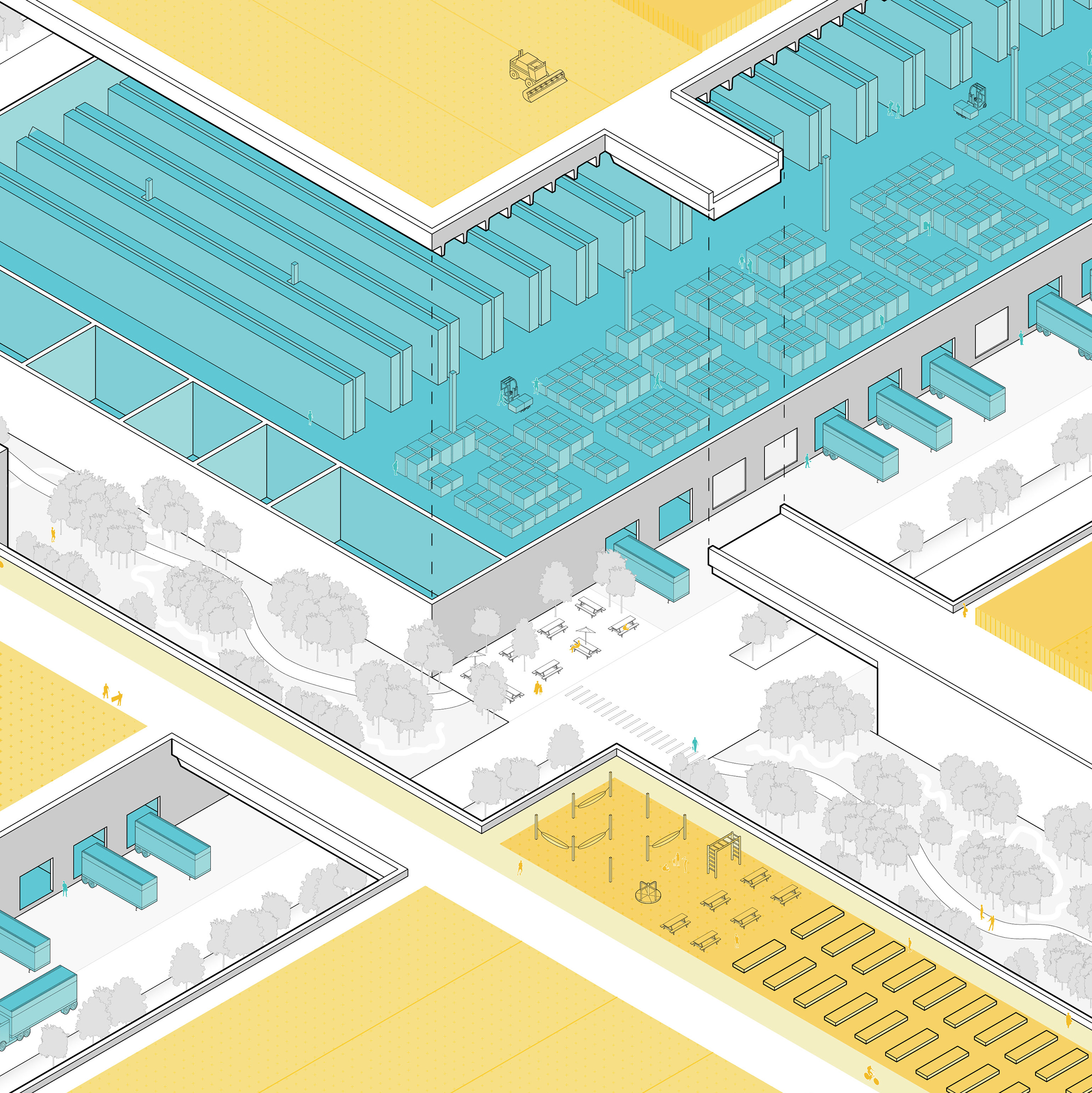
WAREHOUSE CLUSTER WITH ROOFTOP FARM
SPECULATIVE PROTOTYPE
Columbus, Ohio
2010
Derek Boogaard, from the Cultivating Columbus LeFevre Research Studio, taught by Brian Holland, Knowlton School of Architecture, The Ohio State University
Cultivating Columbus
Piggybacking Tactic
Inhabit a Niche
Amidst the sprawling landscapes of the contemporary city sit vast agglomerations of distribution warehouses—sprawling one-story structures devoted solely to the efficient storage and distribution of goods. These enormous complexes generate tremendous economic activity but are culturally and ecologically barren. These architectural deserts destroy species habitat and gobble up prime farmland, blanketing the urban landscape under acres of asphalt, concrete, and elastomeric roofing. Astonishingly, many of these warehouses are as big as the farming plots they have replaced, trading one industrial monoculture for another. This relentless horizontality creates vast tracts of ‘terra incognita’—effectively blank sections of city known only to those who work there. And this, often despite their frequent proximity to commercial and residential neighborhoods.
This project suggests an alternative planning strategy for distribution clusters that would rezone future warehouse districts in support of both rooftop agriculture and recreational parkland. In this proposal, multiple warehouses are compacted into an efficient mat configuration, with loading zones and trucking lanes thread in between. Air-rights transfers and robust roof structures generate developable farmland above efficiently networked clusters of warehouse buildings. A cut-and-fill operation depresses grade by several feet while lifting existing topsoil to the warehouse rooftops, facilitating ease of pedestrian access to rooftop levels from adjoining streets and neighborhoods. Parking lots and loading zones work in concert with distributed ecological systems to provide the necessary wind breaks, water catchment areas, and species habitat to support both agricultural and ecological productivity. Lastly, the introduction of recreational bike paths, playgrounds, and community gardens in and among the farming plots offers up these reclaimed roofscapes for public use and generates an unlikely typology of urban agricultural parkland—an elevated public farm that fuses normally conflicting programs into a singular, symbiotic urban ecology.


